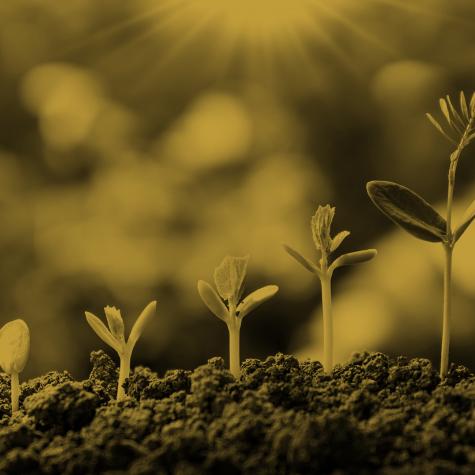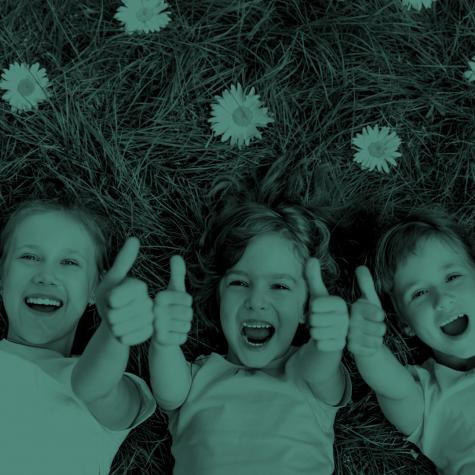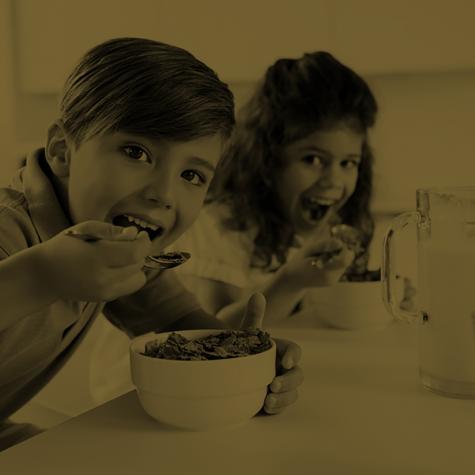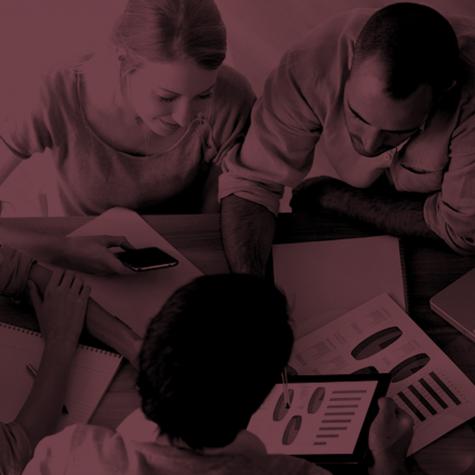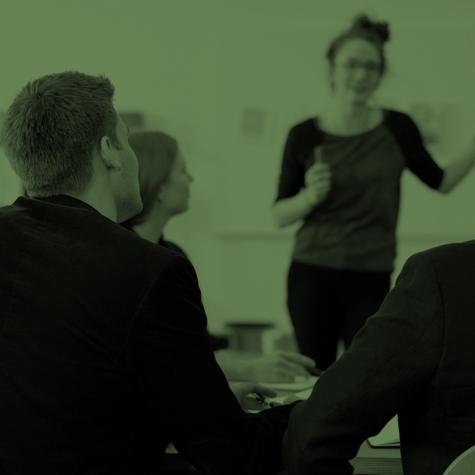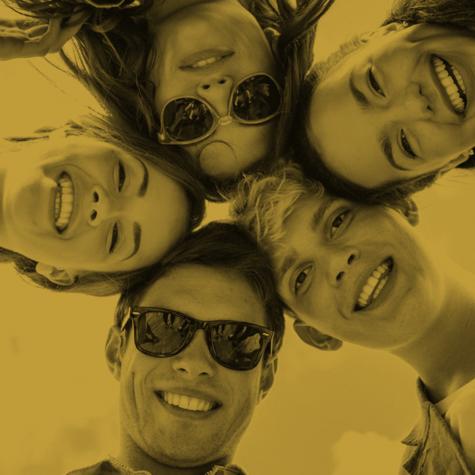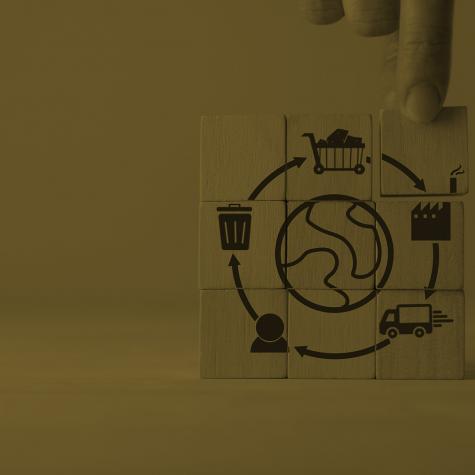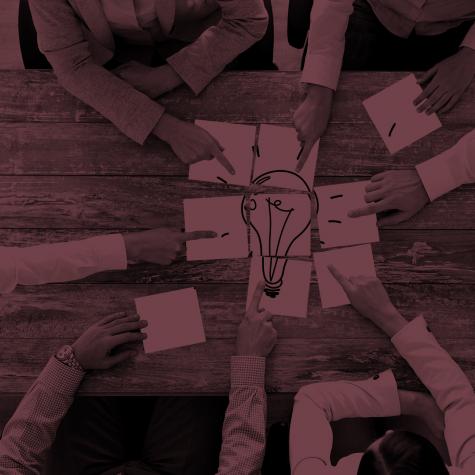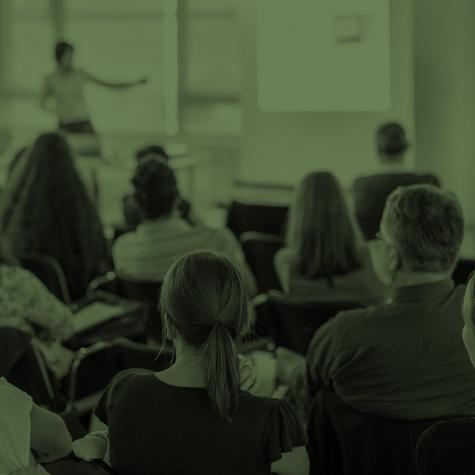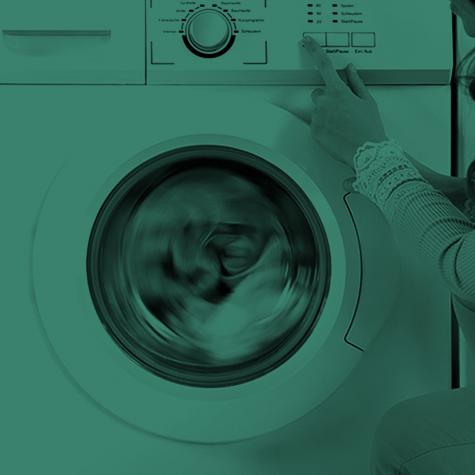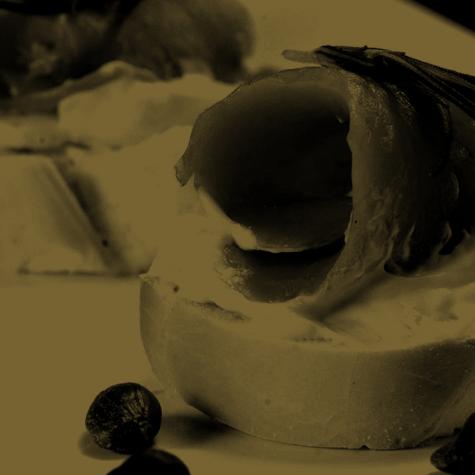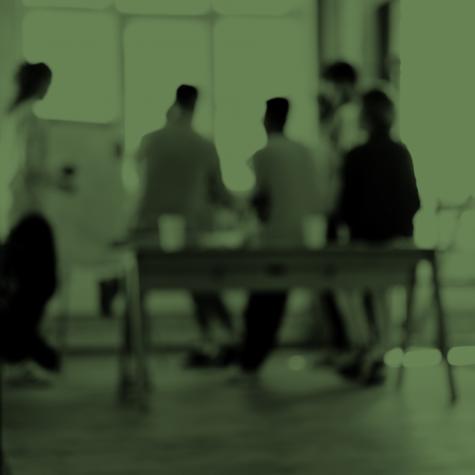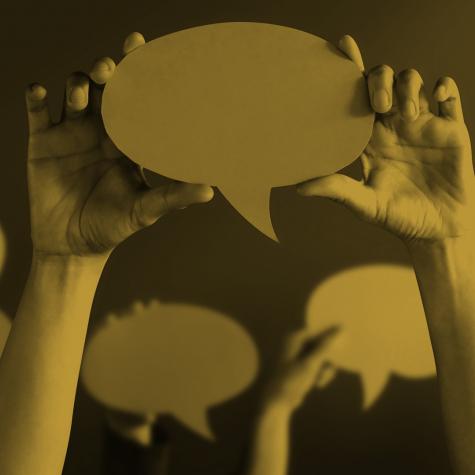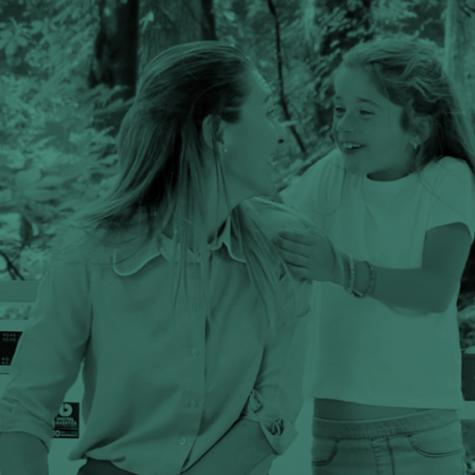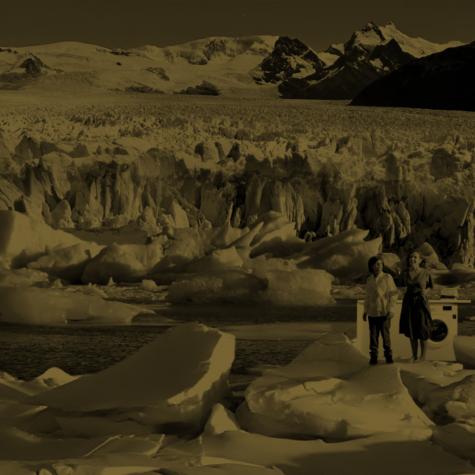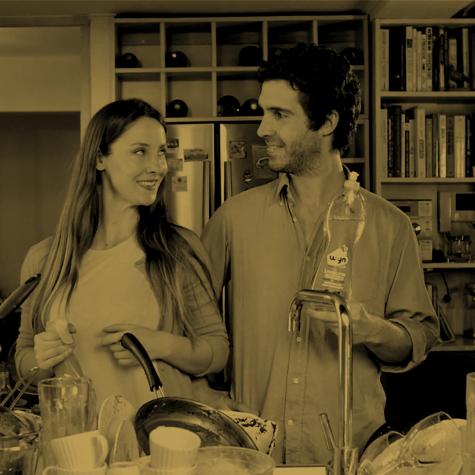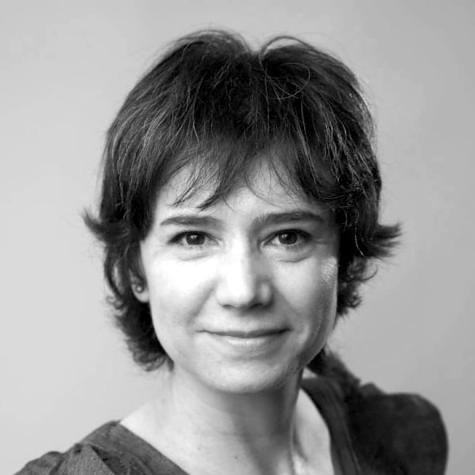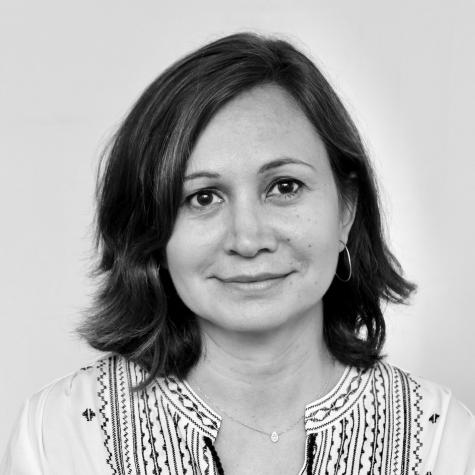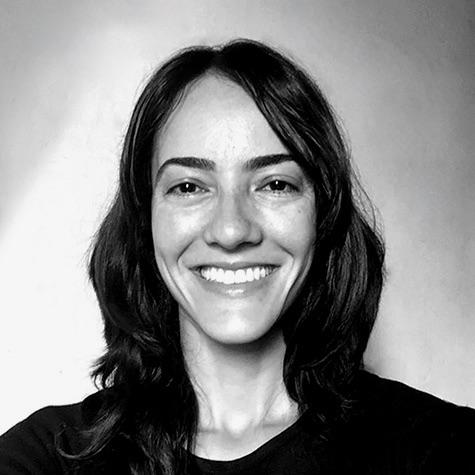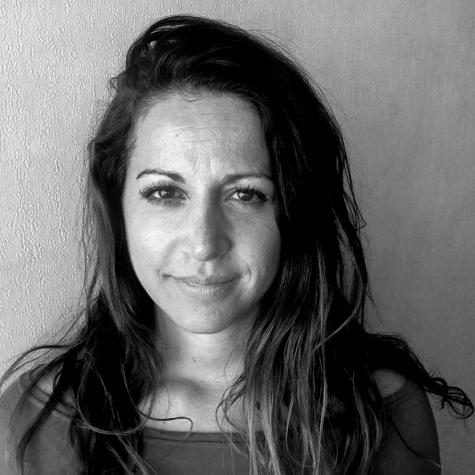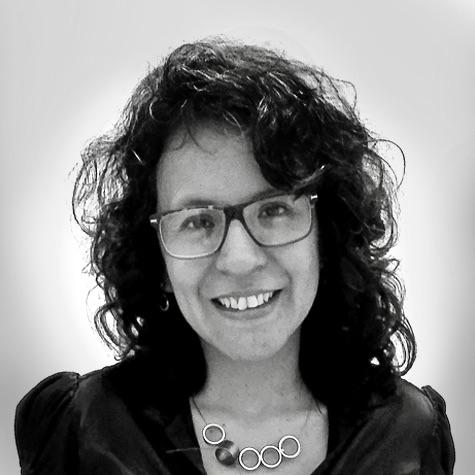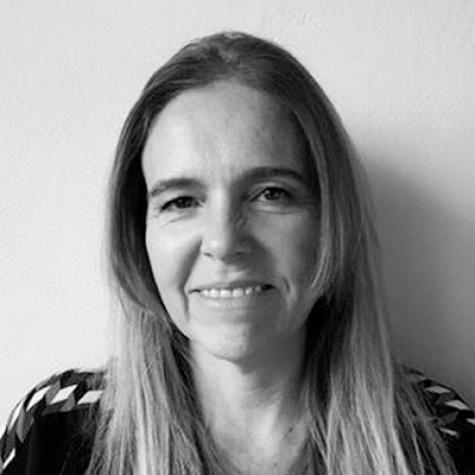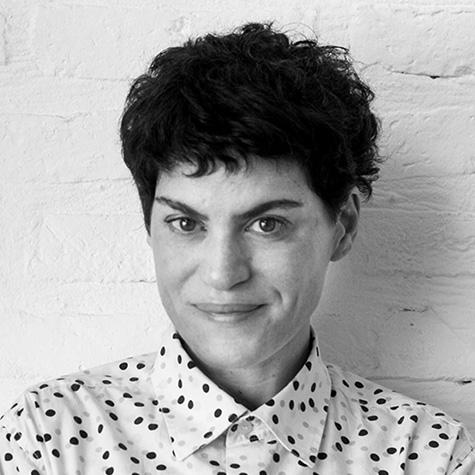We help global, regional and local clients in crafting unique and relevant brands.
About
We build better brands.
Founded in 2008, we are a Latin American brand strategy consultancy that drives growth for local, regional and global clients by building purpose-driven brands that are unique, relevant and resonate deeply with consumers.
We recognize sustainability as a vital component for brands to grow in their ability to bond and perpetuate themselves, amalgamating business, social and environmental criteria into a unique and genuine identity.
Our strategies are conceived as practical tools, designed to inspire the action, innovation and communication needed to build memorable brands.
We complement our strategic support with the development of brand development processes as well as specific training in marketing skills.
Services
Brand building supporting
areas.
-
Strategy
We define a successful brand positioning in the market.
- Brand positioning and brand architecture
- Sustainability inputs to the brand vision
- Brand book development
- Brand equity workshops
-
Equity
We design the plan to build the required positioning.
- Business plan (global + regional + local)
- Innovation roadmap
- Off & online communication + engagement
- Brand migrations
-
Growth
We identify growth opportunities for the brand business.
- Detection of insights that empower innovation
- New markets development (white spaces)
- Brand stretching analysis
- War game workshops
-
Processes
We provide tools to properly support an efficient brand equity management.
- Internal reference tools for brand developers
- Annual business plan crafting process
- Innovation process management (Stage Gate)
- Client/agency process support
-
Training
We develop tailor-made workshops to train specific branding skills.
- Consumer insights
- Brand positioning ID
- Communication briefing
- Communication creativity assessment
Cases
STRATEGY
Approaching sustainability as an integral business opportunity.
Contexto
A Chilean client, which fabric detergents plant sources the highest volume sourced locally, requested an integral understanding approach to sustainability and ways to incorporate it in their business agenda.
Key questions
What does it mean sustainability in broad terms and what are its implications for the cleaning industry in particular?
What are the current consumer understanding and demands on sustainability and how does it link to our category?
Which action priorities can we set in the short, medium and long term?
What are the new framework and the innovation priorities derived from it if we adopt a circular economy vision?
Approach
The process had 4 stages.
1) Diagnosis about sustainability in Chile
We carried a desk and trade research taking examples both from outside as well as inside the category, we also reviewed at consumer, companies and State organizations that advocate for sustainability. We also worked with an eco-design specialist to better understand current and further to come legal regulations.
2) Sustainability kick-off workshop
We designed and run a 2-day session workshop to identify opportunity areas across all the product life cycle, as well as potential priorities and actions. Our working agenda covered sustainability basic concepts, the SDG (Sustainable Development Goals) identified by the UN, examples from and outside Chile as well as in and out of the fabric detergents category, greenwashing cases and internal criteria to assess it, current organizations supporting sustainability at a consumer, companies and State level. Thru different working dynamics, we crafted ideas and opportunities, making a special focus on the detergents brand of our client.
3) Ethnographic consumer study
We briefed, coordinated and participated in 22 in-depth home interviews with a holistic vision of sustainability: the economics, social and environmental aspect of it, opening our sample into modern trade and traditional trade consumers. Last, we defined the questionnaires and coordinated traditional trade owners interviews as well as taking the modern trade inputs on the matter.
4) Brand opportunities & innovation workshop
We designed and executed a full 1-day meeting in which we reviewed consumer and trade insights, ideas and company priorities on one side, while on the other thru different working dynamics we derived potential company and brand priorities by life cycle node in the short, medium and long term.
Cases
EQUITY
Establishing a sustainability agenda for a fabric detergents brand.
Context
An important local player in the fabrics detergent market in Chile requested us to introduce sustainability not only as an incremental reason to believe in its brand but also in its business plan priorities, altogether with the relaunch of its liquid detergent line.
Key questions
What is the concept that best captures our opportunity given our current brand positioning?
How would this concept be deployed into the rest of the brand portfolio?
What is the graphics design that would best represent our proposal clearly and transparently?
What innovation and activation ideas would be a priority to keep on building our sustainability path?
How do we turn this concept into an impactful communication that works as a kick-off of this new relevant reason to believe?
Approach
The process had 6 stages.
1) Innovation workshop for the brand
We designed and executed a full 1-day meeting in which we reviewed consumer and trade insights, ideas and company priorities on one side, while on the other thru different working dynamics we derived potential company and brand priorities by life cycle node in the short, medium and long term. We also defined an innovation roadmap derived from including sustainability in the brand.
2) Concept, graphics design & qualitative test
We worked on concept routes and respective graphic designs before testing them qualitatively. We worked closely to a partner qualitative agency developing a remote platform in Covid-19 times while running 20 focus groups under different segmentations. After this process, we could define main brand concept priorities, together with proper certifications required to have stronger credibility in addressing sustainability.
3) Communication agencies pitch
We led the creative routes generation process (e.g. TV, radio, outdoors, POS, traditional media mentions and social media) as well as the production process on the client-side, up to the final online material was approved. Within this process, we also led a quantitative pre-test which allowed for some minor changes in the final online.
4) Integral campaign production support
We led the creative routes generation process (e.g. TV, radio, outdoors, POS, traditional media mentions and social media) as well as the production process on the client-side, up to the final online material was approved. Within this process, we also led a quantitative pre-test which allowed for some minor changes in the final online.
5) Brand & adv sustainability KPIs
We defined a new set of KPIs that added on the historical brand and communication KPI’s, so that we could measure sustainability incorporation impact.
6) Strategic support on social media execution
We supported message building and sustainability benefits that fed our main concept as part of this new incremental reason to believe for the brand while learning from the new conversation with consumers.
Cases
GROWTH
Conceptualizing a new ingredient for 2 global foods brands.
Context
After the surge of the ‘super food’ ingredients, the global nutrition division of a multinational client in LatAm, requested that we research and analyse the potential of a key new ingredient as a source of inspiration and innovation for 2 global brands within its portfolio.
Key questions
What are the implications of this ‘super food’ ingredient and what is the potential today in the massive consumption market?
In which way can it add or not to the equity of both brands?
Approach
We run a 3 step process.
1) Initial immersion
We run a desk research as well as in-depth interviews with a nutrition technical expert already defined by our client.
2) Competitors intelligence market analysis
We reviewed the competitive map, claims and potential markets.
3) Concept development and ingredient analysis
We reviewed global positioning for both brands and proposed innovation platforms, identifying pros & cons as well as key executional considerations when approaching this new ingredient in existing mixes formulas.
Cases
PROCESSES
Designing a regional innovation management process in beverages.
Context
The regional division of a famous multinational carbonated beverages company needed to have a management process to approve innovation projects, based on Stage Gate model. Such process had to adapt to different business sizes as well as with or without bottler, also covering projects of low, medium and high development complexity.
Key questions
How can we prioritise our projects?
Who is responsible for what across the multidisciplinary teams?
How can we filter and rank our projects?
How do we execute a proper and productive post-launch evaluation process?
Approach
We run a 5 step process.
1) Innovation process initial diagnosis
We studied 9 countries (business units) across LatAm, including 60 in-depth interviews with key executives, understanding recurring issues and opportunities.
2) Management tools development
We designed multi-area tasks flow charts, project presentation and post-launch evaluation templates, gatekeepers guidelines and risk assessment forms.
3) Pilot testing
We gave support until getting to the final process.
4) Regional intranet tool support
We briefed our client’s regional intranet agency to get the 1st online version of the whole process.
5) Regional input to Stage Gate global
After a year of working, we provided LatAm input requirements to a Stage Gate process on a global scale.
Cases
TRAINING
Training communication briefing skills.
Context
In a strongly advertised category like banking, a Chilean corporate client needed to align their communication briefing skills all across all their marketing teams.
Key questions
What are the main weaknesses the different briefing teams are facing today?
How can we make sure that the agency got our briefing needs?
How can the agency enrich our briefing document?
Approach
The process counted with 3 stages.
1) Initial skill gaps diagnosis
We reviewed 60+ briefs already issued in the last year by the different marketing teams within the bank, identifying strengths and weaknesses, the language of their own within the bank culture and complementary technical criteria in which we detected gaps and therefore opportunities.
2) An ad-hoc training agenda
Based on the diagnosis, we focussed on the key priority areas within the briefing process.
3) Training workshop sessions
We designed and executed 2-day workshop sessions in which we deepened concepts, reviewed examples and run group exercise dynamics in which it was requested to imagine key briefing sections derived from in-market advertising (both from the banking category as well from other categories). We also complemented this material with quick reference Q&A guides for a day to day use, that was provided to the participants after each workshop.
Cases
STRATEGY
Defining the regional positioning of an iconic teens' chocolate brand.
Context
A leading multinational foods company needed to align a regional positioning for an iconic chocolate teens brand that already existed in Brazil, Argentina and Chile, before being rolled out to the rest of LatAm (Andina, Central America and Caribbean).
Key questions
What are the differences and commonalities of the brand across each market where it exists?
Which historical brand values cannot be compromised across these markets?
What is the regional positioning that inspires innovation and communication?
Which are the values to be built first once launched in a new market?
Approach
We run a 4 stage process.
1) Regional diagnosis
We run a desk research on the brand in each country as well as a key target analysis considering their relationship with the product and brand both on habits as well as social media.
2) Target immersion
We worked with a sociologist specialized in teens on the region and found key target attitudes towards the role of chocolate in their lives.
3) Regional insight
We identified a pivotal insight for the brand and generated a proposal that was later endorsed by the different local teams and their advertising agencies.
4) Regional brand book generation
We developed the content for the regional brand book as well as briefed and directed the graphics design agency selected by our client.
Cases
EQUITY
Developing the brand books of 4 regional carbonated beverage brands.
Context
A leading multinational beverages company requested the development of 4 regional brand books of key carbonated brands (3 of them global), a project co-led between regional and Argentina teams, that needed to capture the regional local flavor while being framed under each brand global guidelines.
Key questions
What is the global positioning and what is it that we cannot lose to be the brands we have to be?
How do we build a brand storytelling that captures the local (regional) richness under a global frame?
Approach
We run a 3 stage process.
1) Definition of the book content index
We defined a general index with the key chapters to build the brand story in line with global and regional requirements, starting with key target tension to enter into the insight, followed by the brand invitation, the brand DNA, mandatory product principles, graphics design guideline and key communication principles, complemented by activation and engagement principles, strategic pricing and POS guidelines.
2) Brand storytelling development
We analyzed provided material and filled the content in missing sections, always in line with the client and the regional advertising agency (BBDO).
3) Graphics design direction
We briefed and directed the graphics design with an agency selected by our client, choosing key images that could communicate the equity intended in each book vision.
Cases
GROWTH
Turning a Life Cycle Assessment (LCA) into more sustainable innovation.
Context
A laundry detergent brand in the Chilean market requested to work on a more sustainable innovation based on a technical study of the Life Cycle Analysis of the brand and the company, covering the 5 stages of the product life cycle 'from cradle to cradle': raw materials procurement, production and commercialization, distribution, consumption/use, end of life/waste management. Also, such innovation had to be executable under previous cost and time parameters of the client, be aligned with the brand's vision and inspire communication.
Key questions
Where does the brand and the company really stand in relation to the LCA?
Where are our areas of strength and what opportunities do we have?
What are our priorities for improvement over time?
How do we translate these findings into innovation and consumer communication?
Approach
The process consisted of 6 stages.
1) Formal and technical brief for the LCA.
The Dictuc Greenlab of the Catholic University of Chile was briefed together with the client's operations area (R&D + supply chain). After several meetings we identified the main hypotheses and scenarios vs. ourselves and key competitors, to understand the real starting position and opportunities.
2) Priorities definition
Together with the results, we understood the relative position at brand, company and competitor level in terms of LCA and environmental impact, deriving actions and plans with different execution times in the 5 stages of the life cycle. Among these actions, one of them was to identify the next brand innovation.
3) Work on the new innovation
From the conclusions, we would obtain a priority impact with From the conclusions, we would obtain a priority impact with a new bottle design that would reduce the amount of plastic by 30% while containing 25% recycled plastic, with a plan to increase those % over time. All this crossed with studies that placed plastic as the main factor of contamination in the consumer's perception in relation to this type of massive consumption categories. All this crossed with studies that placed plastic as the main factor of contamination in the consumer's perception in relation to this type of massive consumption categories.
4) Brief to the bottle design agency
After a respective scouting, we briefed an industrial design agency, working together with the client's R&D area and accompanying the whole process until the final design. We also briefed the art design agency, respectively, for a new label that would maximize the properties of the new bottle and communicate its new, more sustainable design.
5) Communication brief to the agency
The communication brief was written, rescuing the main concepts of the LCA in connection with the brand essence and vision, while extracting a series of Eco Equivalence Indicators (EEI) to easily demonstrate to the consumer the positive impact of acquiring this product vs. other competitors' products.
6) Campaign production support
It was given for the whole process, from the selection of the production house, pre-production, post production and production of the POS materials.
Cases
PROCESSES
Aligning a client-agency creativity process.
Context
A Chilean corporate bank had high complexity in generating quality communication briefs and proper feedback to their sub-brands advertising agencies. Complexity expressed thru different brief template formats, no clear, assertive nor shared common process across the teams. A shared process had to be adjusted so that the client-agency projects were run more efficiently, clarity would be on the table for all parties involved and quality & timings standards were achieved as requested.
Key questions
Which are the current process weaknesses considering the parties involved?
What should be the best communication briefing template for our client and its agency?
What should be the process to follow once creativity is presented?
Approach
The process had 3 stages.
1) Initial diagnosis with client and agency
We run in-depth interviews with key players on both sides to identify their needs, language, gaps and opportunities.
2) Briefing process development
We developed a brief standard format for all the teams that was agreed upon by both parties, with a glossary of terms and explanatory examples.
3) Pilot testing and follow up
We developed pocket-sized desk brochures to remind the essential process checkpoints to be used especially during the first period of implementation and also followed up the briefing of specific campaigns until this process was running smoothly.
Cases
TRAINING
Communication in defense of freedom of expression and information access.
Context
A global NGO that makes visible, coordinates and connects whistleblowers with influential institutions in issues related to freedom of expression and information access, asked us to generate a training for their global communications team based on their brand positioning, in order to achieve consistency, the same visual language and adaptability to their different target definitions. This tool was to be used both in the case of briefing creativity to an external agency as well as generating it in-house, allowing for a proper separation of roles in the campaign generation process.
Key questions
What are the main challenges faced today by those who issue communication briefs?
How can we make sure that the person who is going to create the brief has understood the request?
How can both the internal team and an external agency enrich the brief?
Approach
The process consisted of 3 stages.
1) Initial skills gap diagnosis
We reviewed different communication briefs from the last 5 years, identifying strengths and weaknesses, necessary own language and gaps vs. new complementary technical concepts.
2) An ad-hoc training agenda
Based on the diagnosis, we focus on priority areas within the briefing.
3) Training workshop
We designed and executed a 2-day virtual workshop, in which we deepened the concepts, reviewed examples and did practical simulations imagining essential missing parts of a brief. All of this, based on briefs both within and outside the FoE&I (Freedom of Expression & Information) category. We also complemented this material with quick Q&A material that was delivered to each member of the team in case of day-to-day doubts.
Cases
STRATEGY
Resizing the umbrella brand of a corporate bank in expansion.
Context
After 15 years of continuous growth, the corporate brand of an important bank in Chile covered 7 sub-brands (banks) without a new corporate definition nor consistent integration under it.
Key questions
How do we think the corporate brand as a current vision and updated umbrella?
How do we introduce values that consider both clients and employees?
Approach
The process had 4 stages.
1) Organizational culture understanding
We did a desk research including historical bank information, we studied the social context in relation to the category and we did in-depth interviews with key organization stakeholders.
2) Understanding the bank ‘client experience’
We visited key branches and understood the KPI’s that were used to measure excellence in performance across them.
3) Corporate and sub-brands positioning
We defined a corporate brand key together with one brand key by portfolio sub-brand (bank).
4) New brand equity workshop
We executed an inspirational workshop with key members in the company, reviewing insights and generating team commitment with the different advertising agencies involved. Also we run dynamics to give shape to the following year’s plan using those new brand keys.
Cases
EQUITY
Identifying the regional profile of a fabrics detergent brand before going global.
Context
A multinational leading company in home and personal care identified its top technology fabrics detergent positioning in LatAm as the global one within that price tiering. Before getting to global, the brand plug-in essentials into new geographies had to be understood and defined.
Key questions
How can we know if such positioning is an opportunity in a new market?
What is it that we cannot compromise to build such positioning?
Approach
Our process had 5 stages.
1) Regional understanding
We studied the brand history thru the most successful markets in the region, considering Argentina as the benchmark.
2) Regional positioning requirements
We defined criteria to be accomplished from a market context point of view, as well as market price tiering, competitors, logo iconography, brand attributes, formulation and packaging mandatory principles, communication key strategies and trade position.
3) Innovation roadmap
We defined innovation platforms that would build brand credentials both in the initial as well as in future stages of the brand.
4) Communication roadmap
We established building block communication stages before jumping to the next building block.
5) Brand vision plan
We elaborated a document that served as a strategic brand guide to be presented to all the new world regions in a further workshop carried by our client.
Cases
GROWTH
From an idea inspired by a Patagonia fishing lodge to competing in Europe.
Context
A group of investors that owned a prestigious lodge in the Argentinian Patagonia had a great idea: create a premium delicatessen trout brand and commercialize it with fishing done in the own lagoons. Before going any further they first needed to translate that idea into a manageable project.
Key questions
How can we structure this idea into a step-by-step project?
What would be the ideal portfolio?
And what should be the star product?
Approach
The process had 4 stages.
1) Initial alignment
We ran a series of interviews with each of the stakeholder investors to align expectations.
2) Gaps identification
We clarified those information areas in which we had knowledge gaps and defined the experts to contact to complete each project section.
3) Project definition
We interviewed those specialists to shape project definition with objectives, phases, costs, milestones and an integrated marketing plan.
4) Brand proposal and business plan
We delivered the plan that guided the team in executing this project with tips and pitfalls to avoid in that path.
Cases
PROCESSES
Streamlining the management of a market research methodologies portfolio.
Context
The Consumer Insights regional team of an important food & beverages multinational company needed an online tool that enabled accessible and comparable information on the different market research methodologies available to all the brand development community. Thus, they briefed us on their requirement with 3 objectives:
a) be able to visualize these methodologies comparatively;
b) simplify currently existing methodologies portfolio by eliminating redundant and/or weaker ones;
c) link those methodologies to each respective Stage Gate model phase, which by the time had been recently implemented.
Key questions
Which are the redundant methodologies and the ones we need to keep vs the current portfolio?
How can we explain them in a coherent, consistent and comparable way?
How are they linked to each Stage Gate phase?
How can we take all this knowledge to an easily accessible intranet tool for the brand development regional community?
Approach
The process had 4 stages.
1) Initial diagnosis and streamlining
We reviewed around 60 registered market research methodologies in the regional Consumer Insights team workflow and reduced them to less than 40.
2) Content generation for easy info access
We developed the content that explained each methodology organizing it in 4 access levels: a) a one-pager slide, b) methodology details, c) base questionnaire and d) best practice example case.
3) Online tool generation
We briefed the client’s intranet agency, designed the access tree and approved its graphic design.
4) Pilot testing up to final kick-off
We gave support to the beta version implementation up to the final online tool was set up.
Cases
TRAINING
Training communication creativity assessment and feedback.
Context
A Chilean bank needed to align its marketing teams’ skills in assessing and giving feedback to the creativity proposed by all of its advertising agencies that attended the different banks under the corporate umbrella.
Key questions
How do we assess if an idea is within the brief and/or requires any type of adjustment?
How do we do proper feedback based on the brief while letting space for inspiration?
How do we handle and deal with creatives presentations and feelings?
Which useful tips can we find to manage the communication production process?
Approach
The process had 3 stages.
1) Initial diagnosis of the skills gap
We run in-depth interviews with key members both on the client as well as on the adv agency side, detecting strengths and weaknesses, banking-based vocabulary and banking culture. We identified the gaps on which to build the new knowledge and practice.
2) Ad-hoc training agenda definition
Based on the diagnosis, we focussed on assessment and feedback aspects that we found of priority.
3) Training workshop
We designed and executed 2-day workshop sessions in which we deepened concepts, reviewed examples, run group exercise dynamics that included role-playing, and reviewed the basics of project planning when it comes to campaign production. We also complemented this material with quick reference Q&A guides for a day to day use, that was provided to the participants after each workshop.
Cases
STRATEGY
Updating the vision of a global NGO advocating for freedom of expression.
Context
After more than 20 years of operation and with a presence in 90 countries, a global NGO that defends freedom of expression and access to information needed to update its brand positioning and vision, under a new role that could connect its new external audiences (made up of institutional influencers) with its more than 120 member partners (made up of donors and institutions denouncing violations in Freedom of Expression and Information, namely FoE&I). This upgrade would align its communication strategy with its whistleblower campaigns across all continents, with a more assertive and consistent message.
Key questions
What are the implications for the NGO's strategy in the coming years to define a new brand role?
How has the type of audience changed and how can this coexist in a new vision?
How do we generate a visual identity FoE&I that quickly integrates journalists with diplomats and whistleblowers?
How would we define that new role? Is it possible for it to manifest itself in any brand action?
How do we bring that role to an inspiring trueline and tagline?
Approach
The process consisted of 5 stages.
1) Initial desk research
We reviewed a 4-year strategy document and future brand needs, as well as previous brand image studies conducted with key members.
2) Interview with key stakeholders
We conducted a series of interviews with key stakeholders across all continents, understanding needs, gaps and opportunities for the new brand role.
3) New target definition
We defined the audience more broadly and with greater specificity, identifying an internal and an external audience, each with their particular driving needs.
4) We generated a global brand key vision
We carried out the respective update, working mainly on the definition of the target, a current insight and discriminator, we reordered and prioritized the reasons to believe in the brand and defined a new essence. At the same time, this work contained validations and frame of reference of key visual resources previously generated by the brand.
5) Presentation and execution recommendations
We presented the tool, nurturing it with a manifesto and a complete visioning exercise that would facilitate any future work on consistent messages aligned with the future communications strategy. It was also complemented with suggestions for the NGO's internal strategic document, its brand audits and the work with third party certifiers on the sustainability and transparency agenda.
Cases
EQUITY
Generating a vision to keep on growing in the fabrics detergents market in Chile.
Context
After becoming the 3rd brand in volume share in the Chilean fabrics detergents market, a brand needed a new vision that would support the path to further growth, aiming at a wider target without losing it core values, and with a graphics design and a new communication that would build upon them.
Key questions
What are the trends that cross both the C3D as well as the C2 socio-economical levels?
What graphics design would best represent that new vision?
What would be the traditional and social media communication that would best engage with our target while bringing new users?
Approach
The process had 6 stages.
1) Starting point research and diagnosis
A qualitative and a brand health quantitative study were ran under our briefing, participation and supervision so that we get an idea of which were our real brand assets by the time.
2) Brand vision workshop
We carried out this workshop with our client, starting with our learnings to get into our new desired point on the map.
3) New graphics design definition
We briefed a design agency agreed with the client to capture the new vision without losing our key visual features. We briefed, participated and supervised a qualitative test in which we reached the final visual route.
4) Advertising agencies pitch coordination
We coordinated the process of calling 4 agencies of different background and size until we reached the winning one.
5) 360 campaign production support
Once creative idea was defined, we gave support along all the production process, from the production house and director selection until the final online and key POP original files were approved.
6) Brand book development
All the content developed was crafted into a brand book with a contents index agreed with our client, covering from the brand pivotal insight up to the POP guidelines, including chapters like graphics design principles, brand architecture, product design and communication principles (both off as well as online).
Cases
GROWTH
Consolidating a positioning with innovation to grow.
Context
Once a brand vision of a detergents brand in Chile started to develop, the client asked us to work on an innovation that could bring incremental volume to the brand considering 2 key competitors that played on the whiteness end benefit and convenient price tier. The challenge consisted in getting to an innovation that was an option to our key competitors while speeding up the new brand positioning.
Key questions
What are the bridges and encounter points between our key competitors’ consumers and our brand proposition?
What is the innovation concept that best captures those encounter points while adding to our brand vision’s prioritized attributes?
How could it be deployed into product & graphics design as well as into advertising?
Approach
The process has 4 stages.
1) Qualitative concepts study
We briefed and supported the process including alternative concepts, graphics design routes and product appearance features until we reached a winning route.
2) Perfumer house pitching
We coordinated the fragrance selection process working with 3 top international perfumer houses.
3) Campaign production support
We supported all the processes from production house selection, pre & post-production, as well as key POP material generation.
4) Digital communication strategic support
We gave strategic support to the work our client was running with its digital agency both on the new website as well as in social media.
Cases
PROCESSES
Developing a market research regional guidelines manual for brand developers.
Context
The regional Consumer Strategy & Insight (CSI) team of a multinational client needed an internal guideline of market research both for their team members as well as for internal brand development clients. This guideline had to accomplish 3 objectives:
a) bring knowledge alignment across brand development community in the region;
b) be integrated within the Stage Gate and shopper marketing processes;
c) Serve as a consultancy guide both to the broad brand development community as well as CSI.
Key questions
How do we teach what market research means both for beginners as well as for experienced team members?
How do we integrate consumer and shopper knowledge into one body of work?
Which methodologies correspond to what Stage Gate phase?
Which content should be developed for the broad brand development community and which for the CSI?
Approach
The process had 3 stages.
1) Market research process diagnosis
We reviewed the CSI team’s strategic role within the regional structure and the processes established as to their involvement in the innovation projects.
2) Regional guideline contents index definition
We defined an index that would integrate consumers and shoppers in the market research processes, taking into account the customer journey from home to the point of purchase.
3) Specific appendices content development
We identified and agreed with the CSI the appendix modules that would only be available for them on specific technical chapters.
Cases
STRATEGY
Creating a new household cleaning brand in line with current non-sexist values.
Context
In the Chilean household cleaning market, historically dominated by global players with complex portfolios, it was detected an opportunity in creating a new brand that brings a new simplification to the category: a graphics design mage in 2D, a simplified portfolio architecture without functional benefits overlapped, top performing formulations at a convenient price, and communication that does not stereotyped women as the solely responsible of the home cleaning.
Key questions
What are the main gaps between consumer expectations and competitors’ offering today?
What would be the liberating invitation for the real challenges the consumers face today in this category?
How can we take this proposal into a product portfolio?
Which is the graphics design that would best show our proposal and how can we take it into communication?
Approach
The process had 5 stages.
1) Current category and consumer understanding
We explored qualitatively the segment to catch opportunities, vacant spaces in the market map and category advertising empathy.
2) Concept and brand vision development
We established a new vision translated into an invitation and potential innovation routes agreed with our client.
3) Product development
We briefed R&D and perfumer houses to get to the proper mixes, both in the formulation as well as in the packaging.
4) Off & online campaign development support
We briefed the client’s advertising agency, went through the creative routes generation and approval process (in TV, radio, outdoors, POP, mentions, digital and social media), as well as the production (e.g. in the case of the TV ad we worked on the production house selection and got along until the final online approval).
5) Brand book development
All the content developed was crafted into a brand book with a contents index agreed with our client, covering from the brand pivotal insight up to the POP guidelines, including chapters like graphics design principles, brand architecture, product design and communication principles (both off as well as online).
Cases
STRATEGY
Updating the role of the Latin America unit of a global NGO.
Context
After 4 years and the context of the Covid-19 pandemic, the members of IFEX ALC (the Latin America and Caribbean group) of the global NGO IFEX, asked us for support in the creation, coordination and subsequent report of a forum that we coordinated in CDMX (Mexico), whose objectives were: 1) to find an updated role for the ALC unit aligned with the global vision of the NGO, and on the other 2) to identify priority areas of implementation of this vision for the global forum to be held in Berlin 6 months later.
Key questions
What kind of meeting can combine openness about the pandemic and openness to future planning?
How do we open a safe space for journalists from member organizations to share their experiences?
What dynamics can allow us to work in groups and find common ground?
How do we help teams prioritize actions and resources?
How do the identified values and roles fit into the overall vision of the brand and the Berlin global forum?
Approach
The process consisted of 5 stages.
1) Initial Immersion
We reviewed the 4-year strategic and communications plan of IFEX ALC and IFEX global, and the key campaigns carried out by ALC.
2) Interview with key stakeholders
We designed interviews with key members of the ALC Coordinating Committee, gathering inputs and insights.
3) Design of the 2-day meeting
We designed the meeting by finding the main reason for the meeting, defining day 1 as the opening day, and day 2 as the confluence day. Pre-work questions were also sent to the attending members.
4) Execution of the meeting in CDMX (Mexico)
We executed the meeting coordinating with the client and the members, while we arranged a safe space to share in a circle and group holistic dynamics that favored collective creation. All this in a digital security environment provided by IFEX.
5) Final report and recommendations with inputs from LatAm to the global forum.
We prepared a report with the main recommendations for the definition of the role of ALC, as well as key instructions for the execution of the future plan under the alignment of IFEX's global vision, and 'out of the box' questions that could stimulate the generation of the future global plan, from the perspective of Latin America.
Team
We are a multidisciplinary team with diverse backgrounds and complementary skills.
Clients
Some consumer and corporate brands we work with.
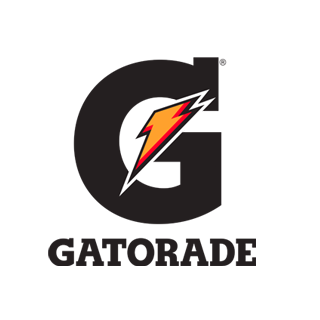
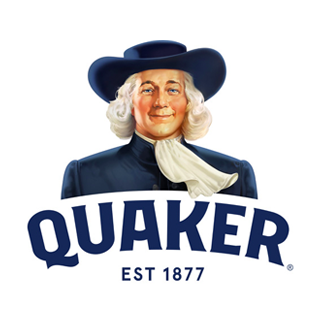
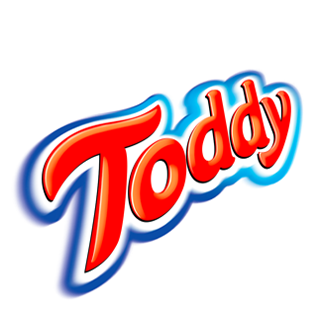



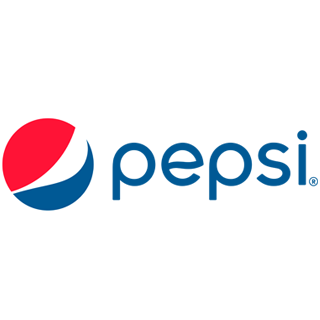
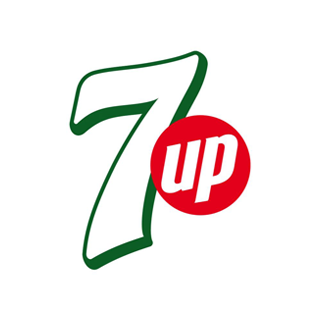
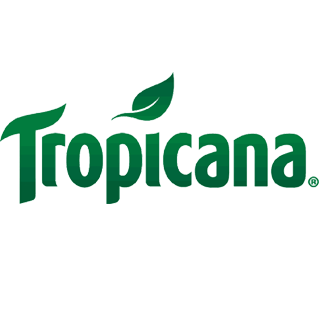



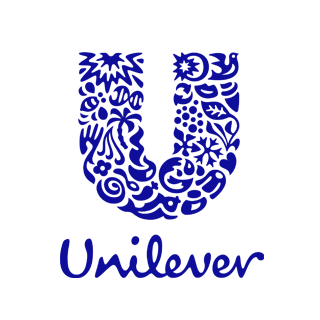
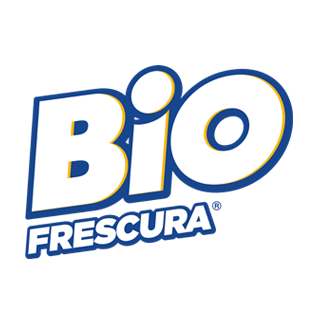

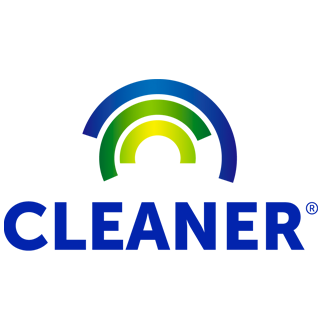
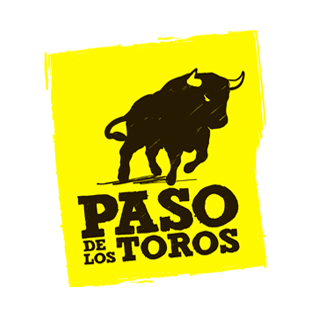



Contact
Let’s get in touch.
- Buenos Aires
- +54 11 5246 1870
- São Paulo
- +55 11 5241 9760
- Santiago
- +56 2 3210 3150
- Miami
- +1 786 636 3590

